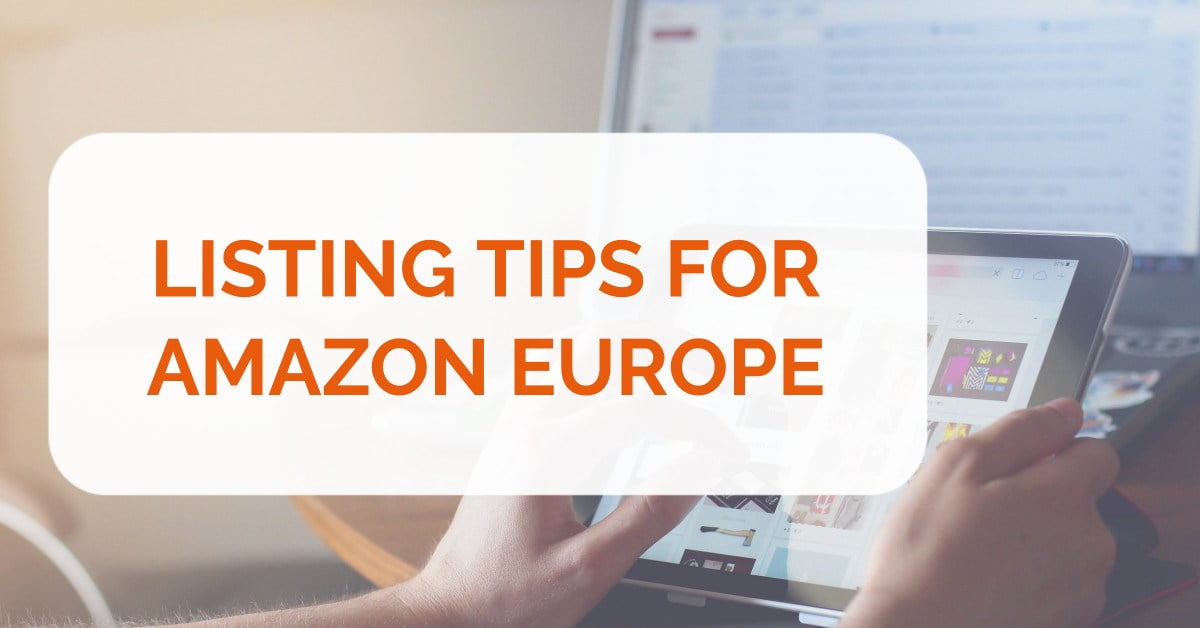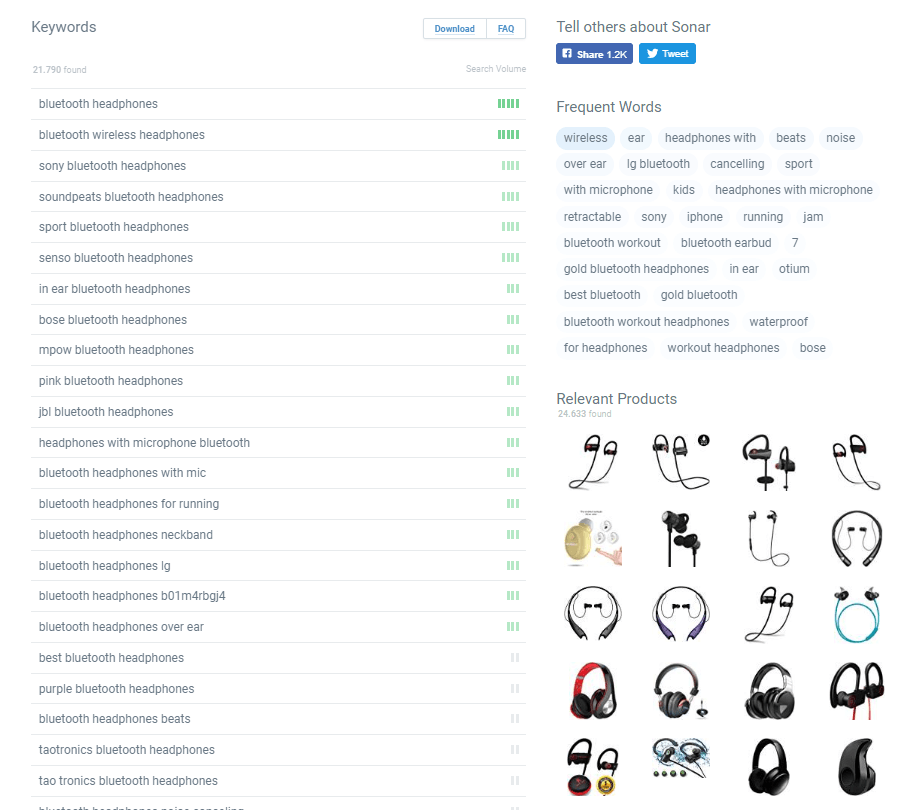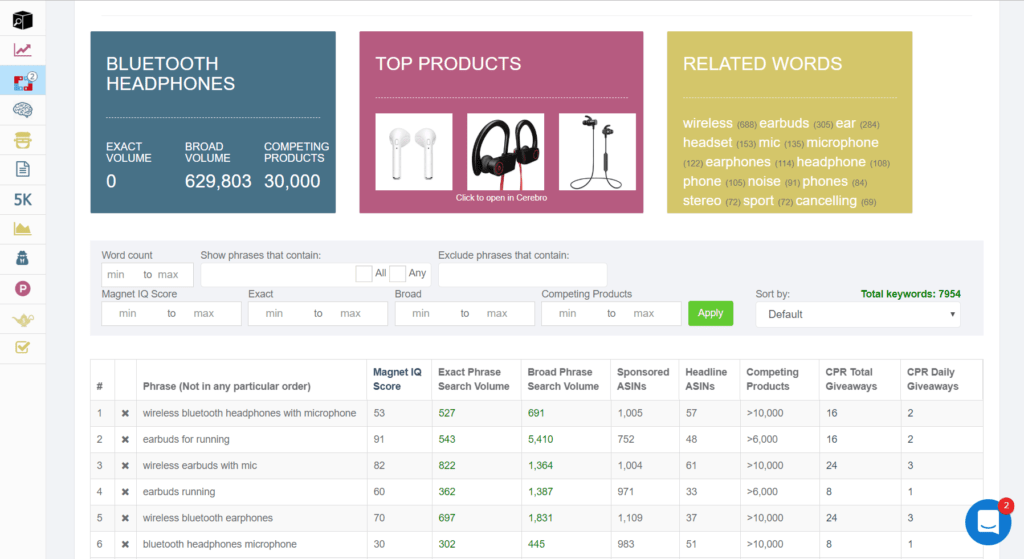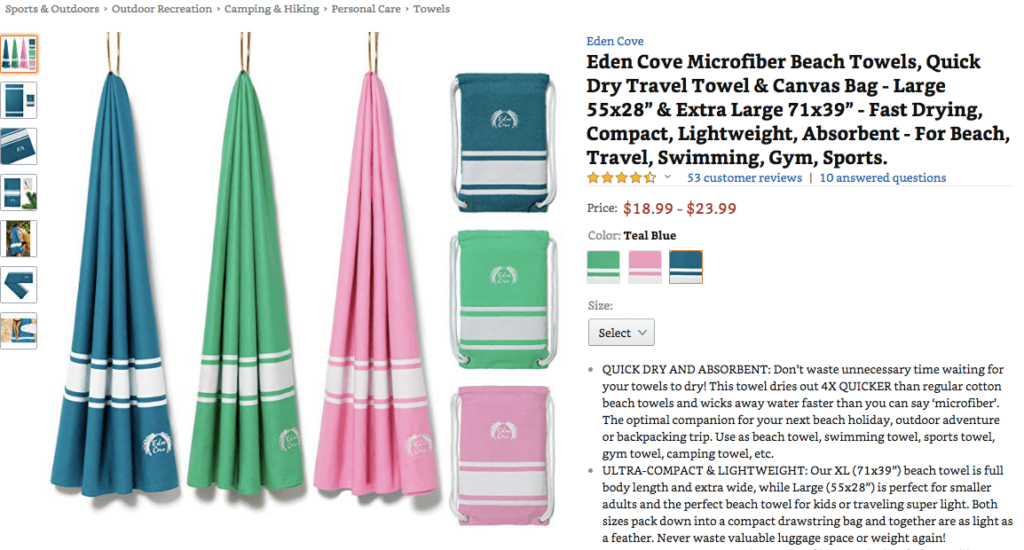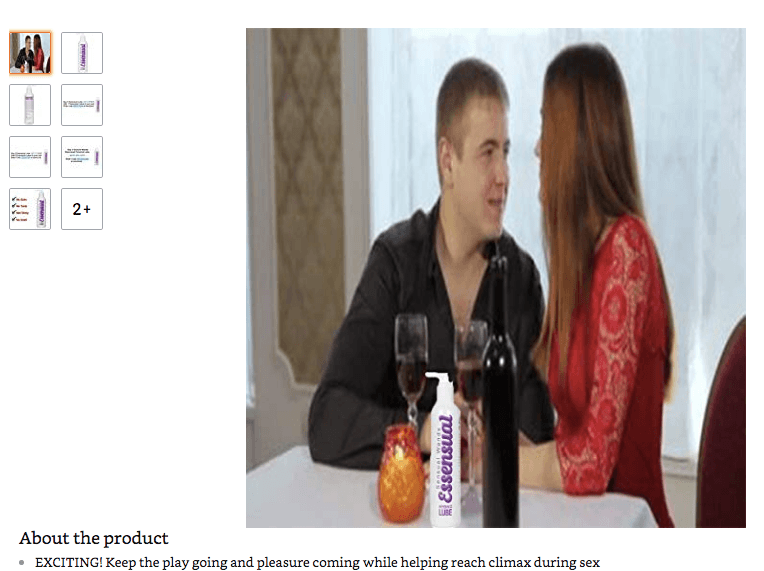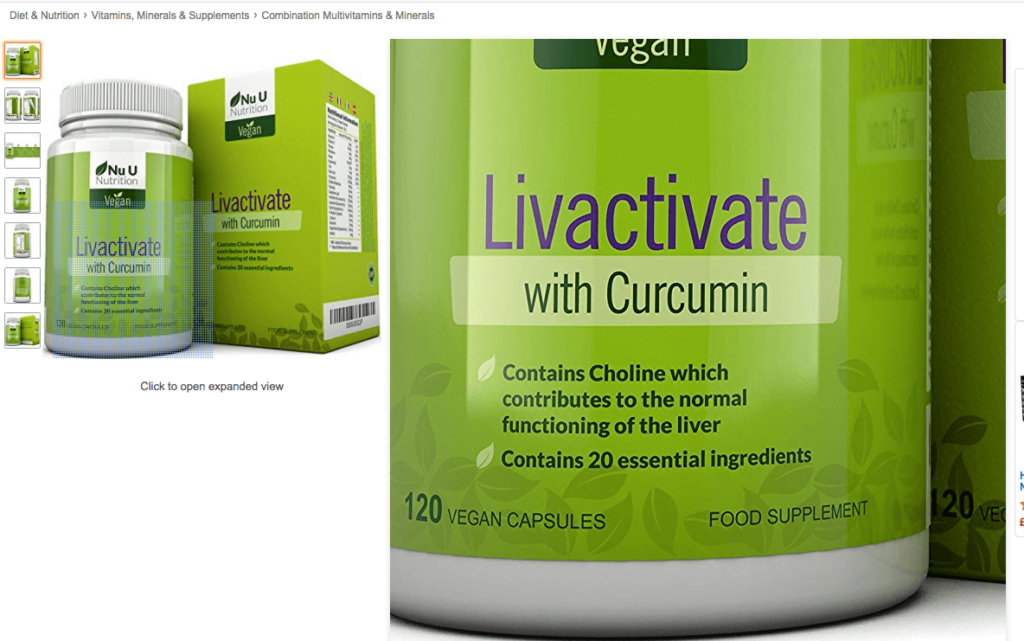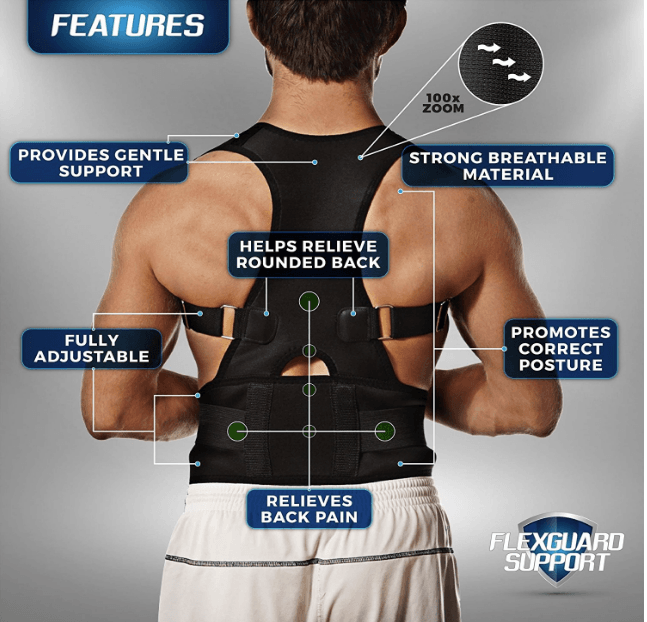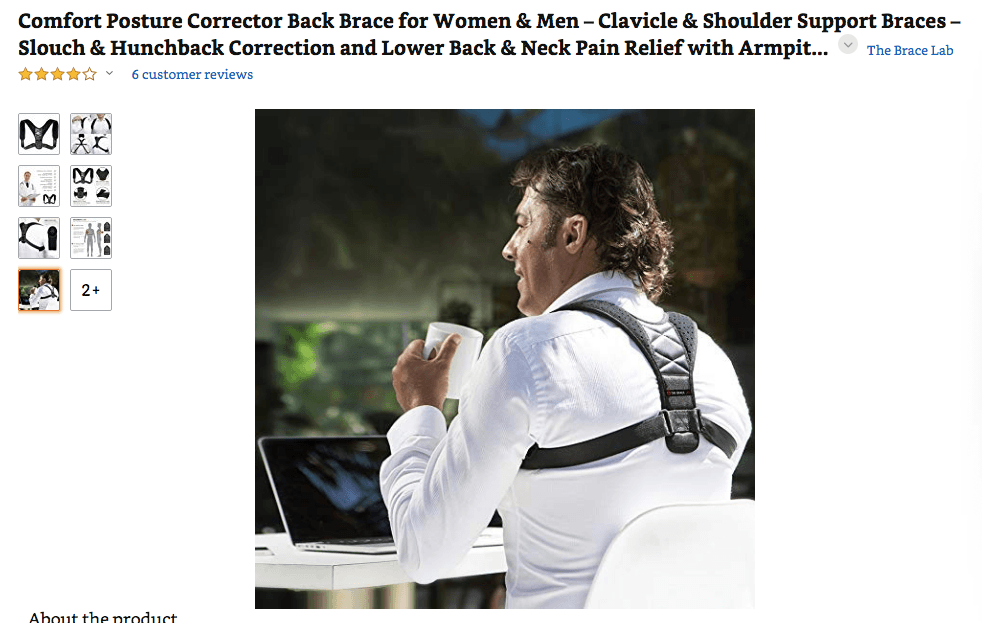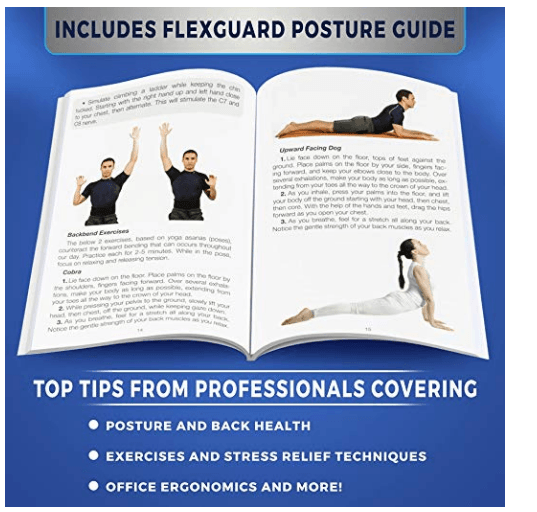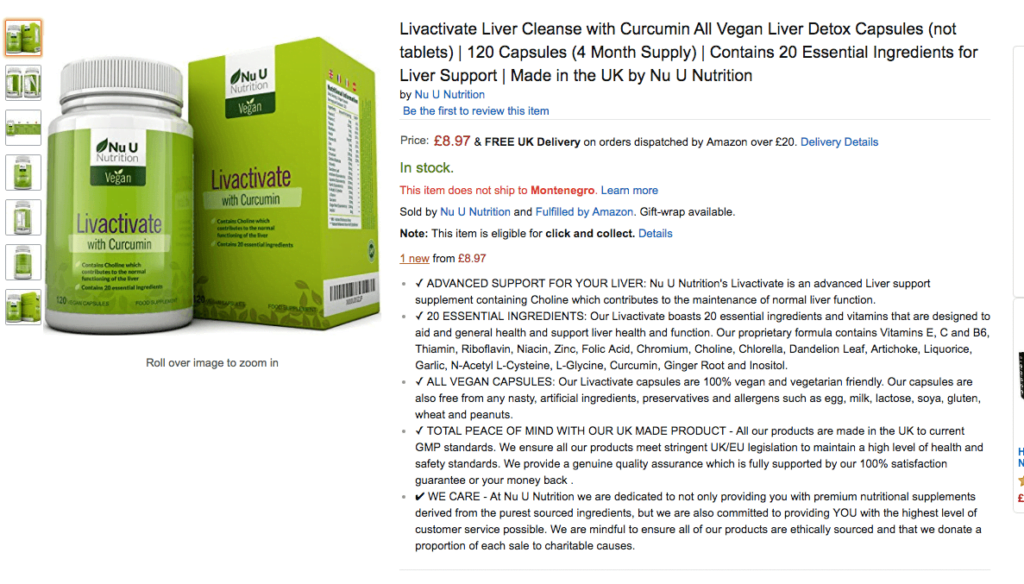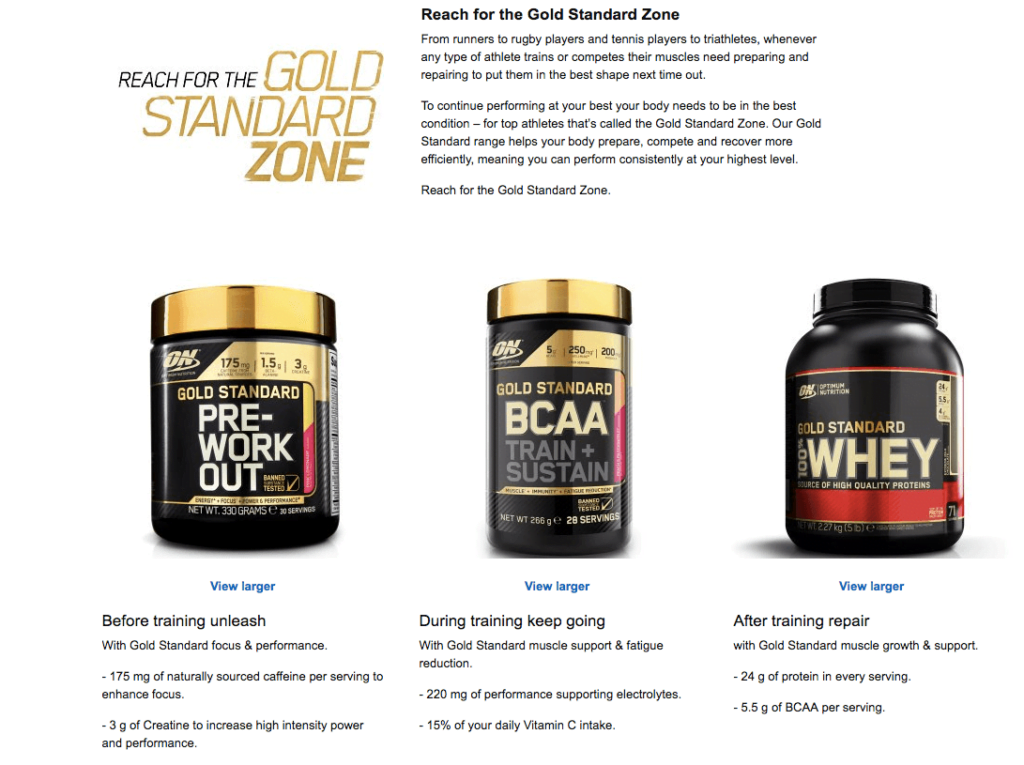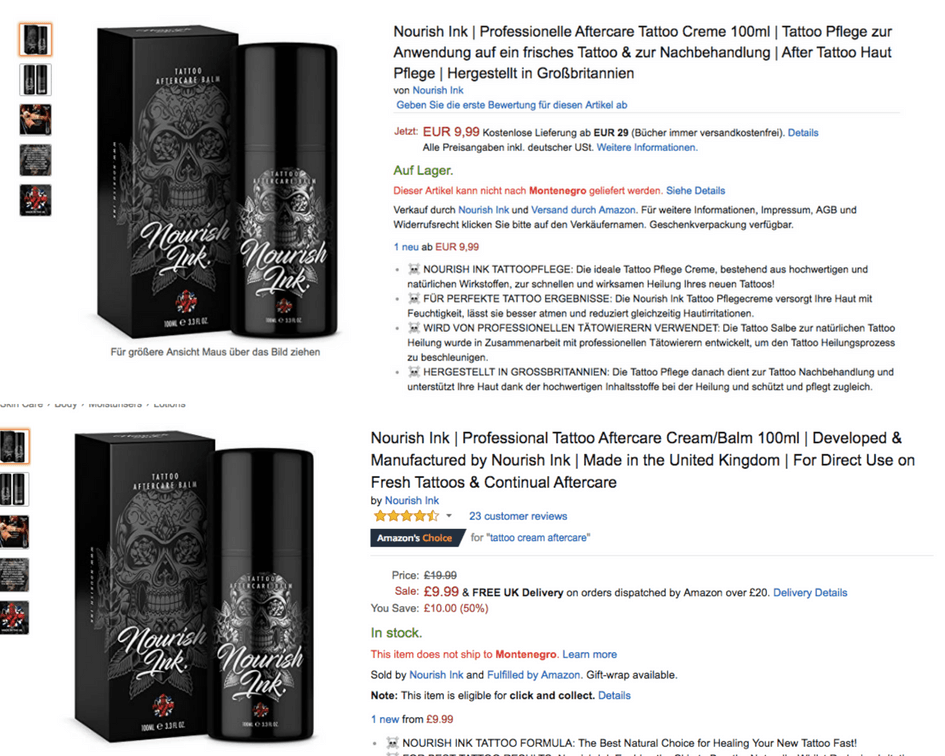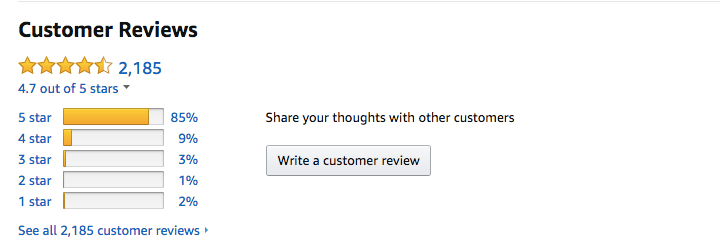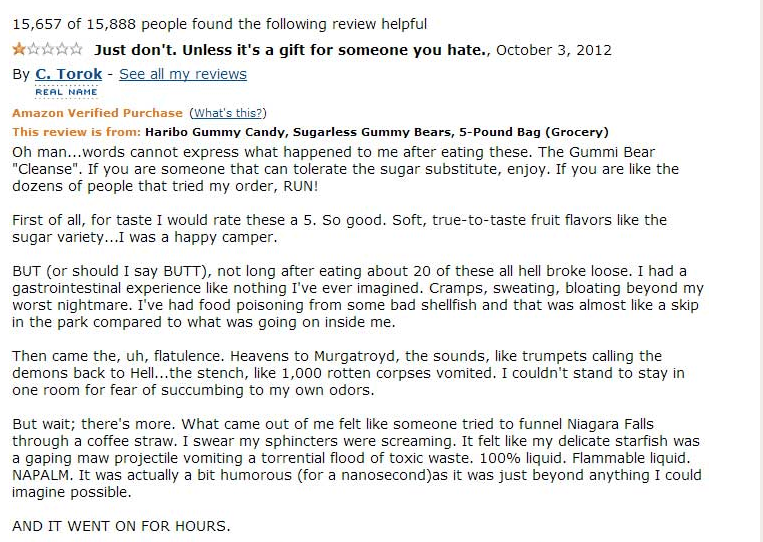Our friends at Judolaunch have shared their product listing tips and strategies for Amazon sellers in Europe. Enjoy the reading!
Whether you are just starting your Amazon journey or you are an Amazon business veteran, Judolaunch is here to help you create the optimal product listings, automate seller account, boost product ranking – all in order to increase sales on every Amazon marketplace.
The moment has arrived. You found the perfect product, you established a working relationship with a quality supplier, and you are ready to launch your brand new product that is sure to top the charts and have customers raving for years to come.
All that’s left to do is create the digital representation of your physical product.
It’s time to produce a conversion-ready Amazon listing.
As simple as it may seem to create a listing on Amazon, it is a task that cannot be taken lightly.
Your listing is likely the only information a shopper will ever receive about your product before they make a decision to purchase or move on to something else.
There’s a lot riding on this; you cannot afford to do anything less than optimize your listing to the max with copy that captures, irresistible images, and flawless keyword selection.
You need to UP YOUR GAME, no matter what market you are selling in.
Whether you have just started selling on Amazon or you are looking to expand your Amazon business beyond the US and into the growing European market, mastering the foreign language listing is a must.
If your only plan is to hope that potential buyers will understand your listing in English, you are in for a big disappointment.
If you want a successful product launch, you will need to list in your target buyer’s native language. Period.
But getting your listing into your target buyer’s language is only the first step.
Optimizing your foreign language listing on Amazon requires a few more steps.
It may create more work on your end, but since an optimized listing equals more sales and profits, those few extra steps are well worth the effort.
Here are our best tips for optimizing your Amazon listings for European markets based on experience and observations to ensure a successful product launch in your new market:
Optimize Your English Listing First
While you will want to avoid a word-for-word translation of your English listing into your target buyer’s native language, you will still depend on your original English listing a great deal when creating its foreign language counterpart.
And it never hurts to improve your English listing either.
That’s why the first step in creating a great listing for Amazon Europe is to create a great listing in English.
For this reason, each of the following tips will first look at how to optimize your listing in English and then how to optimize that listing for your new market.
Whether it is in English, Spanish, German, or Italian, every listing can be broken down into two core parts.
The first speaks to an algorithm – i.e., “the robots.”
The second speaks to actual human beings, your potential buyers.
A lot of sellers only focus on keywords, often going to the extreme of stuffing their target keywords into the title and description in the most awkward ways that do not seem natural to the reader (aka keyword stuffing).
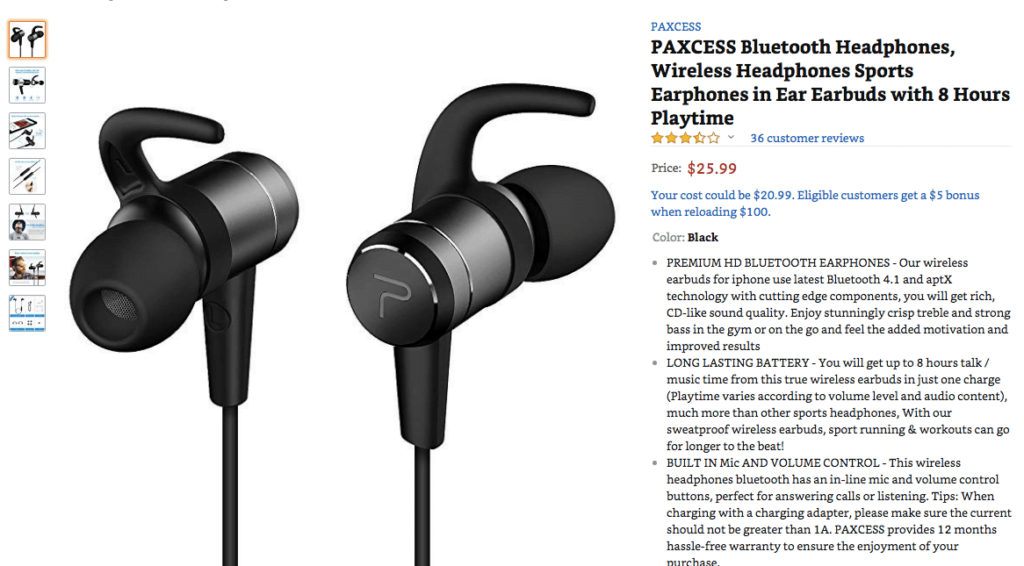
Others focus on writing the perfect product description, but completely neglect keywords and entirely fail to speak to the robots ( satisfy Amazon algorithm criteria).
Both parts of your listing must be on point to ensure its success.
If you speak to both the robots and the people, you can count on a successful product launch and long-term sales growth.
Those two core parts can be broken down even further as we examine the anatomy of a good listing.
The first issue you will need to tackle is keywords. After that, focus on the components of your product page, including:
- Product Title
- Product Images
- Product Features (Bullet Points)
- Product Description, and
- Reviews
Once you’ve done the preparation, all that is left to do is run your launch and continue to improve on what you have already done.
Keywords Are King
The two core ingredients of every listing play into both the front and back end of your product page, creating a delicate dance with every listing.
For example, keywords speak to the algorithm on your back end but they also factor into the front end with how you incorporate them into your official product page.
Potential buyers will type in your keywords, view your product page, and make a purchasing decision.
All of this then sends a message to Amazon’s algorithm about how well your product matches up with your keywords, either boosting or crippling your conversion rates.
This is why keywords are still king or (jedi) master ( depending on your ultimate preference).
Keyword research is essential.
But, how exactly should you go about researching keywords? And how will you know which keywords will bring you the most sales?
A good place to start is to simply type what kind of product you are selling into Amazon’s search bar.
For example, if you are selling bluetooth, simply type in “bluetooth headphones” and you will soon see the kind of items that pop up.
This search term will obviously get a lot of impressions, but it will also be highly competitive, so the goal is to use this initial search as a platform from which you can dive deeper and niche down to more specific long-tail keywords.
For instance, you’ll quickly see phrases like “bluetooth headphones for running’’, ‘’with mic’’, ‘’neckband’’ show up as suggestions in the search bar.
These are words that people are actually typing into Amazon that you can then use to ensure that you show up in their searches.
If your Amazon listing is already live and you are running a PPC campaign, you can also use Amazon to view the actual words real customers used that prompted your ad, not just the keywords you have incorporated into your back end.
This is another good way to discover keywords that you did not find in your initial research phase.
But depending on Amazon alone will only get you so far when it comes to proper keyword research.
Keywords are so crucial to your listing’s success that it is more than worth it to invest in advanced keyword tools that will increase your research capacity.
How to analyze your keywords report?
Digging into your search term report is probably the most important thing you can do to prepare for a product launch.
However, these different keyword research programs will generate so many metrics that it can sometimes be difficult to decipher which keywords are actually the best to use.
From our experience, here’s the best way to process all that information:
What to Look For: You already know your main search terms and that there is high competition for those. This is your opportunity to find the kind of search terms that you know you could be on page one in a second without spending a ton of money because you won’t need to give away as many units to get to the top.
- High Impressions: You will want to start by finding keywords that have a high number of impressions. It should be the first thing you look at. If you’re going to invest the money and resources to do a launch, you want to make it worth the investment by going after keywords with more impressions. You want to stick the landing on something that gets a lot of traffic.
- CTR: The second thing you should take into account is the click-through rate (CTR). Your search term report will tell you the CTR%, giving you an indication of how closely connected and relevant your search term is to your product. If a certain term has a high CTR, you can easily assume that the search term and results invoked an emotion in customers, motivating them to click through to the listings. But you don’t just want people to click through, you want to make sure they are buying too.
- That is why the third metric you should assess is the conversion rate, closely followed by the number of orders placed (they are pretty much the same thing). This is simply to make sure that people actually follow through and purchase the item they have searched for. If it’s converting fairly well, you’ve found a good keyword. On the other hand, if the conversion rate is less than .4%, it may not be the best idea to launch with that particular keyword. Still, each search term and each product will be a little bit different. Pro Tip: If you have a seasoned product that has a lot of reviews, then you may go for it. If it’s a brand new product with no reviews and you don’t have that stickiness quite yet, it’s probably not a good fit for the moment. Instead, go for keywords that have a higher CTR% and higher conversion rate.
- The next step is to ensure that your product is indexed for that particular search term. To check for this, simply type in the search term and the ASIN into the Amazon search bar and it will either show zero results or your product will appear. If it shows zero results, that means you haven’t sufficiently optimized the front or back end of your listing for that keyword to actually run a successful launch.
- Finally, honestly ask yourself if the keyword is adequately connected to what you are selling. Even if the search term passes all the other criteria, if you are selling a garlic press and you are ranking at the top of the page for “spatulas,” that’s not going to help you out in the long run. Check the competitors for your ranking, look at the other products that show up in the search results and examine how well your product fits with the rest of the group. If you’re too different, you may not have the right keyword.
In the end, you’ll want to find 5-10 terms that you know you can rank well for and make it to the top of page one.
A successful launch is all about the preparation that goes into it and digging into the search term report to find the perfect keywords is the perfect place to start.
To conduct all of this research, you will obviously need to use one or more keyword research tools. There are many different tools available to Amazon sellers these days, but we made it easier for you by examining and trying them first.
Keyword Research Tools for Amazon Sellers
One of the top tools for the US that we prefer at Judolaunch is Seller Tools, which gets its data from the same sources as Amazon instead of scraping Google or public resources.
Seller Tools can reveal the most searched for keywords and suggest new ones based on the original keywords you put into the system.
(use this link to get 20% off your monthly Seller.Tools subscription)
This is just one example of how you will need to adapt and reassess the playing field whenever you enter a new market. To help get you started, we’ve included our favorite keyword research software for each market below.
Foreign Language Listing Tip: Just because you have done your keyword research in English does not mean that you can skip this step when it comes to the native language of your new target market. A direct translation of your English keywords can lead to terrible keyword choice.
It is much better to do keyword research in the local language to ensure that your decision is based on data from the market where you actually intend to sell your product. Ideally, you should have a native speaker who understands the industry perform the keyword research for you.
However, a great way to find your main foreign language keyword is to type your main English keyword into Amazon.de or whichever foreign market you are targeting.
To use the (in)famous garlic press example, simply go to Amazon.de and type in garlic press and you will quickly see that every single listing on the first page includes the word knoblauchpresse in the title. For our headphones example, you will get ‘’Bluetooth Kopfhörer’’.
You can then use this keyword to begin your keyword research utilizing a keyword tool like Sonar Tool, which is free and covers all of Europe. Sonar also has a browser extension that you can install to find competitors’ keywords directly on Amazon.
If you are entering other foreign markets, here are some of our favorite tools and where they work:
MerchantWords has a database of search terms from buyers in both North American and Europe and will soon have data from Asia. This is an extremely helpful tool because it will give you a list of keyword suggestions based on your original keyword and then it will give you additional lists of medium and long-tail keywords based on the suggestions in your first list.
Helium10 offers a dozen different tools that can help you find high-ranking keywords and optimize your listing. The Frankenstein Amazon keyword processor is particularly powerful. It can run de-duplication filters, remove unwanted characters and words, sort keywords by popularity, and process large lists of keywords at a time cutting down your research time. The also have a reverse ASIN keyword lookup tool. They offer a free plan, a la carte options, and both a platinum and diamond plan for $97 and $197/month respectively.
AMZ Tracker is another favorite here. You can spend as little as $33.30 or as much as $266.70 a year to use this software. It is available in Japan, the UK, France, Germany, Spain, the US and India. The tool is incredibly efficient and worth the money.
Optimize Your Product Title
Your title is a great place to introduce as many relevant keywords as possible.
Potential customers will be looking for listings that contain the keywords they have used in their search, so enter as many primary keywords as you can toward the beginning of your title. This will also help you to rank higher for keyword volume and relevance.
Just make sure your title still appeals to humans.
Use an element of copywriting in your product title to encourage buyers to click on your listing.
Amazon titles are longer than Google title tags, so use that to your advantage and create a more detailed title with enough information for someone to make a purchasing decision.
Unlike Google titles, longer titles are better on Amazon. Amazon suggests that you follow a formula to create your titles. For example:
Product Type + Brand + Model Name + Model Number + Color
Amazon also suggests that you capitalize the first letter of every word, write numbers in numerals (1 instead of one), spell out measurements as well as the word “and”, only list the size if it is relevant, and only include the color in the product title if the product comes in multiple colors.
This can serve us an example of a good product title.
Why?
We have focus keyword included in the front ( together with the brand’s name). It looks like the seller has made use of all available characters, and address the main product, its main benefits (fast drying and lightweight), different use cases (beach, travel gym) and specifics for this ASIN.
Foreign Language Listing Tip: Different approaches will appeal to different markets based on cultural differences. While US customers tend to appreciate more emotive copywriting, German customers respond better to factual information about the product. Small differences like this can make a big difference in sales, which is just another great reason for hiring a native language speaker to create your foreign language listings.
Invest In Irresistible Images
The old saying that a picture is worth a thousand words goes a long way when it comes to creating a successful listing.
Tell me, how likely is it that you would actually buy this product ( unless the purpose of it is to prank your friend who just went back to the dating scene).
Your pictures will do more to speak to your customer than anything else on your page. When you run an ecommerce business, your images are the most important component of the customer’s decision-making process.
If you were to stand behind the typical Amazon customer and watch them go through the process of searching for and choosing a product, you would quickly see that they do not read a single word of your listing until they are well into their search.
And I mean it- not a single word. In the beginning, they see ONLY pictures.
If they like what they see on the surface, then they click and will read the words.
Your sales copy could be out of this world, but if your main image is terrible, you won’t even get the click and they’ll never even get to the page that you’ve spent all your time optimizing for keywords and writing the perfect sales copy.
For this reason alone, your main image is literally the most important part of your whole listing.
Your other eight images are only second in importance to your main image.
Putting your images in the wrong order or missing one or two key photos could completely botch your conversion rates.
Even if everything else is in place to ensure a strong algorithm from the start, if your conversion rate is low because you have bad images, that will negatively affect the algorithm and send you back down the search rankings.
There are so many people who do not invest in their product images, so just doing this one step right will give you a huge advantage and put you in the top 10%.
Here’s the exact formula that we see works the very best to convert visitors to your page to actual customers:
- Solo Shot With White Background: In order to comply with Amazon and to convey a clean, professional brand image, you need that solo shot with a white background. White-ish backgrounds will not do! It should be a pure white background solo shot taking up as much of the frame as possible.
- Solo Shot Up Close: This isn’t necessarily true for all products, but most products will need an up-close shot showing the texture of the product, the label, or the packaging. It should be something that gives the customer an intimate feel of that product – like they can almost hold it in their hands, it’s so close. This image should also convey the quality of the product.
- Benefits Graphic: This image should visually display the product’s benefits. How is the product going to help the customer? How is it going to make their life better? This image is all about the customer.
- Features Graphic: This image, on the other hand, is all about the product. It will visually display the features of your product and highlight how it is different from all the others products the customer could choose from.
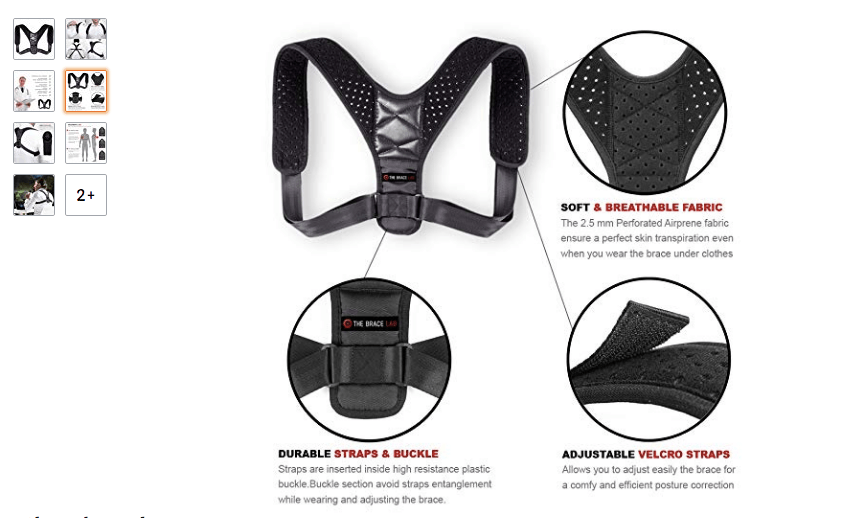
- Lifestyle Shot (2): These images allow the customer to step into someone else’s experience with the product and imagine themselves using it. The lifestyle image is so key because it taps into the customer’s mirror neurons that we talk about so much in marketing psychology. Since you typically have room for two lifestyle images, you could one of a man using the product and one of a woman, or you could show the product being used in two different ways.
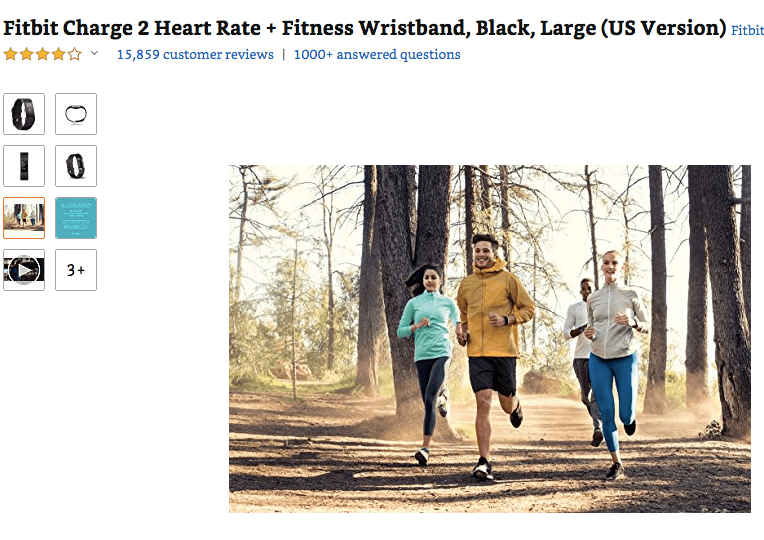
- Multi-panel Shot (Use Cases): The multi-panel image allows you to show various different types of product uses in just one image. “You can use it on a plane! You can use it in a car! You can use it at your desk!” And, because you are uploading HD images (of course) customers will be able to hover over the image and see each panel up close and read the text.
- Product Specific (2): Your final two images should be tailored to your specific product. Maybe your product comes with a case, maybe it comes in a bundle, maybe there’s an extra feature you want to highlight. Whatever it may be, these last two images will be based on what your product is and what you want to convey to your audience.
Foreign Language Listing Tip: You may be thinking that, since images are a universal language, there is nothing that you need to change about your images from your English listing to your foreign language listing, but there are a few ways you can adapt to make the experience even better for your customers.
For example, your benefits and features graphics should include text. Because Amazon Europe does not allow sellers to display a separate set of images for each country, you will need to put multiple translations on the same image.
Highlight Product Features
The bullet points Amazon allows you to use are a powerful tool for several different reasons.
For one, these product features will appear next to your images and above the fold, making them the first and sometimes only copy potential customers will see before making a purchasing decision. These bullet points are also a great place to add several of your most important keywords.
You are allowed up to five bullet points – use all of them!
Lead with the product’s benefits. How will the product change your customer’s life or solve their problem?
After that, follow up with the product’s unique characteristics and features and list everything that comes with the item. Be brief and only include the most important information.
Foreign Language Listing Tip: Ensure that you adapt the units of measurement from US measurements to those used in Europe. Most users are not going to waste their time trying to convert inches into centimeters. If you’re in an especially competitive niche, they may just go to another page where the measurements are already in units they understand so they can be sure they are getting what they need.
Deliver With Description
When it comes to actual copywriting, the key is to speak to the emotional reason the person is buying your product.
Logic comes second.
People buy because they feel something – use that.
Get to the emotional foundation for why your customer is buying and then show them how your product meets that need by eliminating their pain or providing them with the benefits they seek.
We’re not talking about features or even benefits here, we’re talking about the final benefit.
Take, for example, a guy looking for a garlic press. His problem isn’t that he wants to chop up some garlic. That’s how it seems on the surface, but the deeper problem is actually that when he is chopping garlic, he’s mooshing it with the side of a knife and his hands get all sticky and then he can’t touch anyone or anything else while he’s cooking… and he really wants to give his wife a hug while he cooks.
That’s the problem.
The problem is not that the garlic needs to be chopped up, it’s the fact that this guy is uncomfortable and he is disconnected from people. There’s a big difference between what appears to be the problem and the pain that the person is actually experiencing.
You rarely see people get this right with their listings because everyone is so obsessed with keyword optimization.
However, at the end of the day, the person reading your listing and clicking that Buy Now button is a human being, not an algorithm or a robot. If you speak to that human in the right way, that’s how you get the buy.
To get to that end need, start by asking why a customer is looking for your product and keep asking that question until you get to the core pain.
As a general rule, you should ask yourself why at least five times.
It is only once you’ve spoken to that core need that you can go into the benefits and features of your product and show how your product is better than the rest.
The delicate keyword dance comes into play here as well as you will need to include your keywords in your description.
You have to speak to the algorithm and the person at the same time.
Most people choose to speak to the algorithm and stuff their description with keywords. Do not do this!
Instead, find ways to elegantly include keywords so that your description is natural and enticing. Create a narrative and use descriptive language.
Note: Be careful to follow all of Amazon’s copy guidelines or you could have your account taken down or suspended. You are not allowed to mention a money-back guarantee or say that you treat any disease, even if you have a supplement that is meant specifically for people with that disease.
Foreign Language Listing Tip:
Do NOT use the auto-translate option Amazon provides to create your foreign language listing! If you do, it will sound like a five-year-old wrote your listing and potential customers will run from your page like someone set it on fire.
Or worse, it will mistranslate your listing and communicate something entirely different than what you are actually selling.
Amazon’s auto-translate is so terrible that it shouldn’t even be a feature. Do not use it!
Instead, hire someone who will not only translate your listing but interpret and recreate it to speak to the specific culture of your new market. For instance, Germans tend to focus more on product features while the Spanish respond more to the emotional copywriting similar to what you would use for US markets.
Only a local will really understand these cultural nuances.
You should also look for someone who has a good grasp of English who you can trust to correctly interpret your original listing.
Again, the goal isn’t translation, it is the creation of sales copy that converts.
You need English mastery and native language skills to do this successfully.
You should also consider having another native speaker on hand who can proofread your new description to catch spelling mistakes and basic grammatical errors that could send customers looking elsewhere for a more trustworthy listing.
Ensure Great Reviews
Reviews have a huge impact on your product rating and can often sway future customers who are trying to decide whether or not they should buy your product.
Nothing can bring down your product sales like very bad reviews… Unless you’re a 1lb bag of Haribo Sugar Free Classic Gummy Bears, whose detailed 1-star ratings of the disastrous gastrointestinal effects consumers had actually made it the most popular “revenge candy.”
But I can assure that this does not happen frequently. Most sellers do not have this kind of luck.
Having more than one good review can also give your listing credibility, forming an important part of your business growth.
Foreign Language Listing Tip: One of the best ways to secure great reviews is to speak to your loyal customers and provide great customer service.
If you are serving a market where a language other than your native tongue is spoken, the best solution is to hire a native speaker who can handle customer service in the local language for you.
Translation should never be done by Amazon or Google translate – it should always be done by a human being, because otherwise it would not make sense.
And the buyer, who is most likely a native speaker, will notice. Remember that lazy kid from high school that would google translate every French homework and it would be so obvious to everyone listening ‘’his essay’’? The same thing happens with a lot of listings.
Don’t be that person.
This is a service the Judolaunch offers alongside native copywriters who understand the ins and outs of keyword research and successful product listings.
Run a Launch
No matter how wonderful your listing is, if it is on page 40 of Amazon, no one will ever see it.
Like the joke says, “The best place to hide a dead body is on page two of your search results.”
No one is looking at page two, let alone page 40 of Amazon, Google, or any other search engine for that matter.
The success of your listing depends on getting it to page one. Your end goal should be to get it to the very top of page one.
You will need to put in the same amount of effort to get your listing from page 40 to page one as you will to get it from the bottom of page one to the top.
If you’re that far back, you will want to do an initial launch to get to page one and then a second launch to get to the top of page one.
Once you’re on page one, you’re in the game. Until then, your listing essentially doesn’t exist.
It’s all about getting to page one. Once you’re on page one, you will need to run a launch based on the number of units that the top sellers in the space you’re looking to break into are selling.
If they’re doing 15, 25, 60, or 100 units a day, you will want to do a launch that matches or exceeds that over a period of five to ten days. Seven days is the optimal period.
Foreign Language Listing Tip: One of the great benefits of expanding to new markets like Germany is that the competition is still in its infancy.
It is much easier to take the number one spot on Amazon.de for your product than it is to get the same spot on Amazon.com.
Still, there are many factors that go into running a successful launch that a rookie could get wrong, especially in a new market.
Judolaunch has years of experience helping Amazon sellers to successfully launch their products in international markets. We have an entire team built to not only create the perfect foreign language listing but also to launch your product to the top and help it stick there long-term.
Never Stop Improving
Optimizing your listing is a process that will last as long as your product is around.
There is always room to improve and things are always changing, so what works today may not work a year from now.
Be willing to adapt in the face of evolving consumer trends, Amazon’s changing algorithms, and the growth of your competition.
The good news is that you can always come back to these tips as the foundation of a good Amazon listing.
You may need to tinker and adjust things here and there, but if you can get these principles down, you are well on your way to creating a solid product page that will have you selling on Amazon for years to come.

